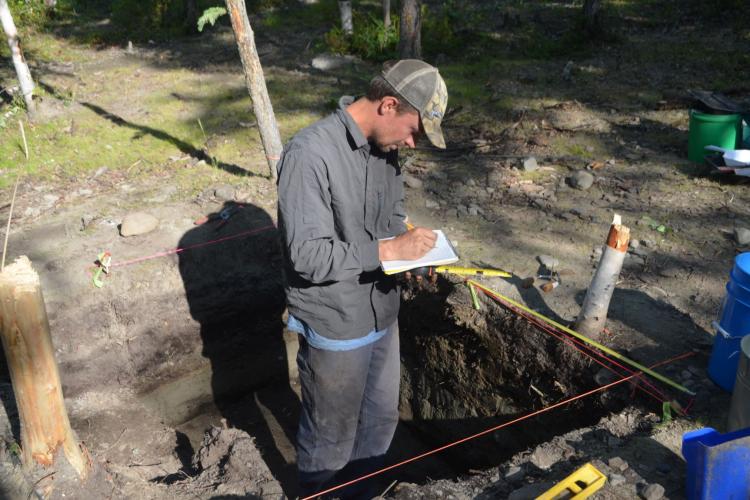Breadcrumbs
Aging one of the oldest archaeological sites in the Yukon

Michael Grooms wants to understand the unique geological context of one of the oldest archaeological sites in the Yukon. The Little John Site, located near Beaver Creek, has been radiocarbon dated to approximately 14,000 years ago with significant findings of indigenous artifacts and associated ancient animal bones. One way of verifying age is to analyze the geoarchaeology of a site to correlate the stratigraphy with the radiocarbon dates associated with the artifacts. Geoarchaeology is the study of natural physical processes at an archaeological site that affect the artifacts, like landslides, floods, etc. He will focus the geoarchaeology on the late Pleistocene and early Holocene at the Little John site - the period immediately after the last glaciation. Grooms is a graduate student who hopes to present this data in his dissertation in the winter of this year.
Yukon University’s Norm Easton, collaborating with White River First Nation, has been excavating and studying the area for over 30 years, with Grooms joining the team in 2010, when he began developing the research question he wanted to answer throughout his dissertation. Although his home institution is the University of New Mexico, under his supervisor, Dr. E. James Dixon, much of his research has been supported by analysis done by Easton, with the use of YukonU’s lab space, equipment and collections access.